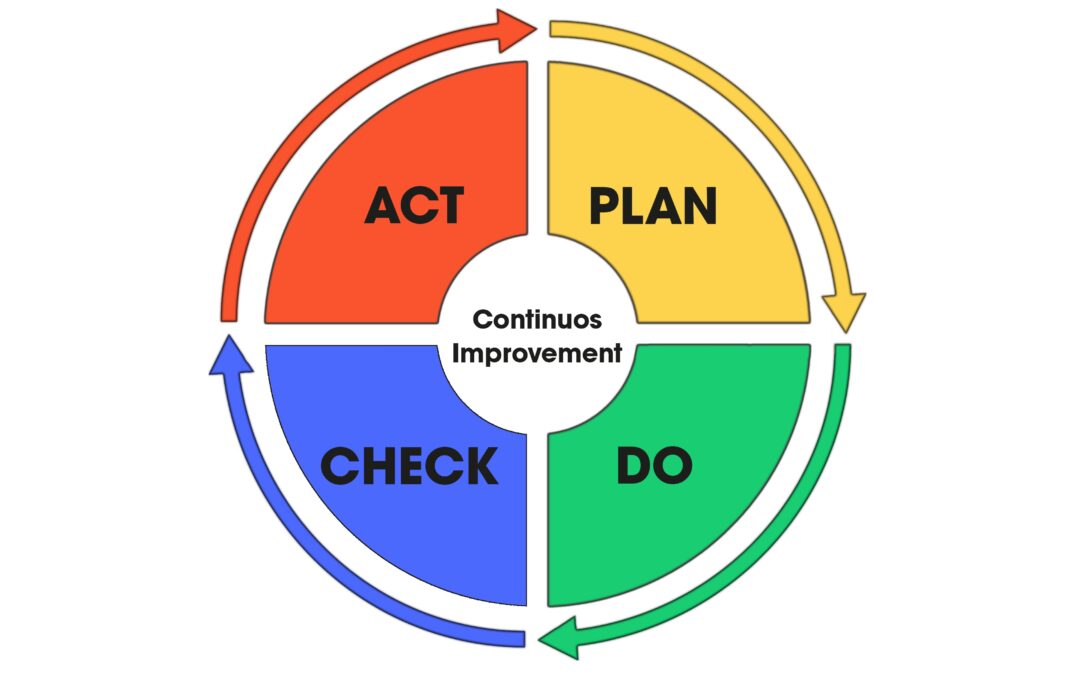Are you looking for a certified translation service provider? What does this mean and, above all: What are the advantages to you as a client?
Our translation agency has been certified in accordance with Standard DIN ISO 9001:2007/2015 since 2011. It takes a lot to achieve this. Our quality management system (QMS) regulates all the systems in the DIN-compliant quality management manual, details all the work steps involved in text creation/service provision and the fulfillment of a client’s requirements. Likewise, management and support processes are scrutinized continually.
Our goal is to guarantee consistent working processes as well as their ongoing and effective optimization.
There’s nothing remotely rigid about how we approach our jobs. Far from it, we have a laser-like focus on the continuous improvement of processes and thus our whole working method.
This is illustrated in the Plan-Do-Check-Act cycle.
Constantly checking results helps us to optimize our processes.
We carry out our own internal audits at medical language service and we are also audited annually by an accredited ISO certification body.
It is not just the project managers, but also the translators, reviewers and layout designers whose work is checked continuously in accordance with the PDCA cycle. Have all specifications been complied with? Are the client’s requirements satisfied? Has the client’s glossary been followed consistently throughout the translations?
If there are any deviations in the texts created, we react at once and develop a process with the translator to optimize their way of working so that such deviations can be rigorously excluded. And, of course, the implementation of these new processes is reviewed in its turn. This creates a closed circle of continuous improvement!
But we don’t stop there. Along with the process steps set out in the quality management manual with clear quality guidelines and quality targets, monitoring and measuring of processes, regular audits by a certification body, continuous improvement and optimization of processes (PDCA cycle), we pay close attention to identifying and fulfilling the requirements of our many clients. What does our client need? What will make their work easier? How can we help? Does the client have some particular terminology we should “carve in stone” so that we can produce texts with 100% of the client’s preferred wording?
Expanding on the solid foundation of DIN 9001:2015, we also work in accordance with Standard ISO 17100, the benchmark for translation services. Qualified translators, proofreading of translations as required, complete documentation – these are just some of the components of DIN 17100.
For the purpose of better legibility, gendering is either no longer used in texts or all genders are addressed as equals.
By Dipl. Ing. Anne Schalk
Managing Director – medical language service
